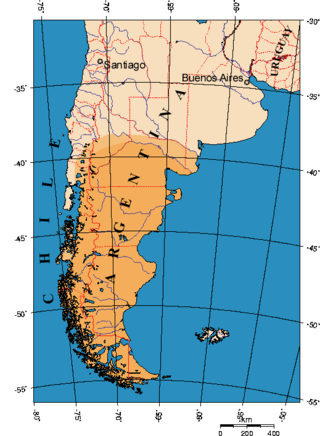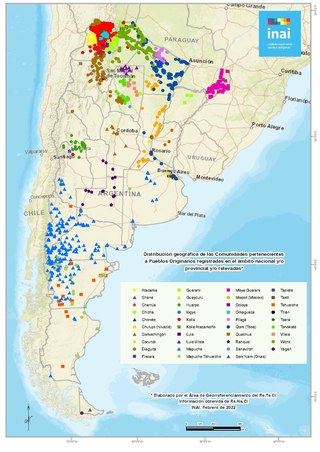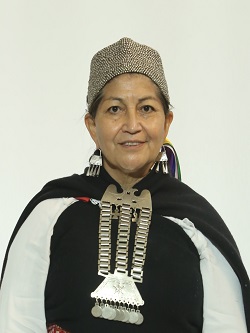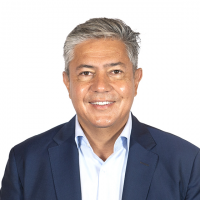
Patagonia is a geographical region that encompasses the southern end of South America, governed by Argentina and Chile. The region comprises the southern section of the Andes Mountains with lakes, fjords, temperate rainforests, and glaciers in the west and deserts, tablelands, and steppes to the east. Patagonia is bounded by the Pacific Ocean on the west, the Atlantic Ocean to the east, and many bodies of water that connect them, such as the Strait of Magellan, the Beagle Channel, and the Drake Passage to the south.

Pedro Gutiérrez de Valdivia or Valdiva was a Spanish conquistador and the first royal governor of Chile. After serving with the Spanish army in Italy and Flanders, he was sent to South America in 1534, where he served as lieutenant under Francisco Pizarro in Peru, acting as his second in command.

Río Negro is a province of Argentina, located in northern Patagonia. Neighboring provinces are from the south clockwise Chubut, Neuquén, Mendoza, La Pampa and Buenos Aires. To the east lies the Atlantic Ocean.

The Mapuche is a group of native indigenous inhabitants of south-central Chile and southwestern Argentina, including parts of Patagonia. The collective term refers to a wide-ranging ethnicity composed of various groups who share a common social, religious, and economic structure, as well as a common linguistic heritage as Mapudungun speakers. Their homelands once extended from Choapa Valley to the Chiloé Archipelago and later spread eastward to Puelmapu, a land comprising part of the Argentine pampa and Patagonia. Today the collective group makes up over 80% of the indigenous peoples in Chile and about 9% of the total Chilean population. The Mapuche are concentrated in the Araucanía region. Many have migrated from rural areas to the cities of Santiago and Buenos Aires for economic opportunities.

The Tehuelche people, also called the Aónikenk, are an indigenous people from eastern Patagonia in South America. In the 18th and 19th centuries the Tehuelche were influenced by Mapuche people, and many adopted a horseriding lifestyle. Once a nomadic people, the lands of the Tehuelche were colonized in the 19th century by Argentina and Chile, gradually disrupting their traditional economies. The establishment of large sheep farming estates in Patagonia was particularly detrimental to the Tehuelche. Contact with outsiders also brought in infectious diseases ushering deadly epidemics among Tehuelche tribes. Most existing members of the group currently reside in cities and towns of Argentine Patagonia.

Spanish is the de facto official and administrative language of Chile. It is spoken by 99.3% of the population in the form of Chilean Spanish, as well as Andean Spanish. Spanish in Chile is also referred to as "castellano". Although an officially recognized Hispanic language does not exist at the governmental level, the Constitution itself, as well as all official documents, are written in this language.

Argentina has 35 indigenous people groups officially recognized by the national government. As of the 2010 census [INDEC], some 955,032 Argentines self-identify as indigenous or first-generation descendants of indigenous peoples.

Coordinadora Arauco-Malleco (CAM) is a radical, militant indigenous organization engaged in political violence in pursuit of attaining an autonomous Mapuche state in the territory they describe as Wallmapu.
The Mapuche conflict involves indigenous Mapuche communities, also known as the Araucanians, located in Araucanía and nearby regions of Chile and Argentina. It is often referred to as a conflict between the Mapuche and the Chilean government or state, despite the fact that there have been a variety of other actors participating in the conflict such as the Spanish Empire as well as corporations such as big forestry companies and their contractors. In the past decade of the conflict, Chilean police and some non-indigenous landowners have been confronted by militant Mapuche organizations and local Mapuche communities in the context of the conflict. Some scholars argue the conflict is an indigenous self-determination conflict; others like Francisco Huenchumilla see it as the expression of a wider political conflict that affects all of Chile given the existence of other indigenous groups.
Wiñoy Tripantu is the Mapuche celebration that marks the return of the sun, often referred to as the Mapuche New Year. It occurs on the June solstice, which is the shortest day of the year in the Mapuche homeland in the Southern Hemisphere. Sometimes, the term We Tripantu is used interchangeably with Wiñoy Tripantu, but some Mapuche language speakers use We Tripantu for the Gregorian calendar New Year and reserve Wiñoy Tripantu for the June solstice celebration.

Resistencia Ancestral Mapuche is an indigenous organization advocated to the creation of an autonomous Mapuche state in Araucanía, which is, they say, the revindication and recovery of former Mapuche lands. They are mostly renowned for their violent methods, often recurring to arson and poaching and armed attacks against Argentine National Gendarmerie. It operates in the Patagonia region of Argentina and Chile, seeking to secede territories of both countries to create an independent Wallmapuche country for the Mapuche nation. It is associated with the Coordinadora Arauco-Malleco, considered a terrorist organization by the Chilean government.
Racism in Chile encompasses any type of racial or ethnic discrimination by a group of inhabitants or organizations of that country against groups from other nations or the same nation. The origins of Chilean racism, and that of other Latin American nations, can be traced back to 16th century colonialism under the rule of the Spanish Empire. In the establishment of imperial rule, Native Americans experienced extermination, slavery and forced miscegenation.

Consejo de Todas las Tierras or Aukiñ Wallmapu Ngulam (AWNg) is an indigenista organization that defines itself as aimed to create a "Mapuche state" in Chile and Argentina. Its leader is the werkén Aucán Huilcamán. The organization has its roots in the «Comisión 500 años de resistencia», created in 1989 as a splinter group of ADMAPU, whose members had become critical of ADMAPU. The commission subsequently changed name to Consejo de Todas las Tierras in 1990.

Francisca Linconao Huircapán, also known as Machi Linconao, is a machi and human rights activist in Chile. She became the first Indigenous rights defender in Chile to successfully invoke the 1989 Indigenous and Tribal Peoples Convention when she sued to stop a company from logging a forest adjacent to her community. In 2021, she was elected as a representative of the Mapuche people to the Chilean Constitutional Convention election.

Elisa Loncón Antileo is a Mapuche linguist and indigenous rights activist in Chile. In 2021, Loncón was elected as one of the representatives of the Mapuche people for the Chilean Constitutional Convention. Following in the inauguration of the body, Loncón was elected President of the Constitutional Convention. This role, along with her academic career, has placed her at the center of public attention and controversy. In particular, her formal education became a subject of public scrutiny when the Council for Transparency (CPLT) demanded the release of her academic records, igniting a debate about the intersection of race, class, and public transparency in Chile.

Natividad Llanquileo Pilquimán is a Mapuche lawyer and human rights activist. Llanquileo was noted for her role as a spokesperson during the 2010 Mapuche hunger strike. She was a member of the Constitutional Convention during its existence from 2021 to 2022.

Rosa Catrileo Arias is a Mapuche lawyer and politician who serves as a member of the Chilean Constitutional Convention. As an attorney, she has primarily focused on protecting indigenous land rights in the Mapuche conflict.

Rolando Ceferino Figueroa is an Argentine politician, currently serving as a Governor of Neuquén Province since 10 December 2023. Hepreviously served as National Deputy elected in Neuquén. A member of the regionalist Neuquén People's Movement party until 2022, Figueroa was elected in 2021 and currently sits in the Provincias Unidas inter-bloc.

















